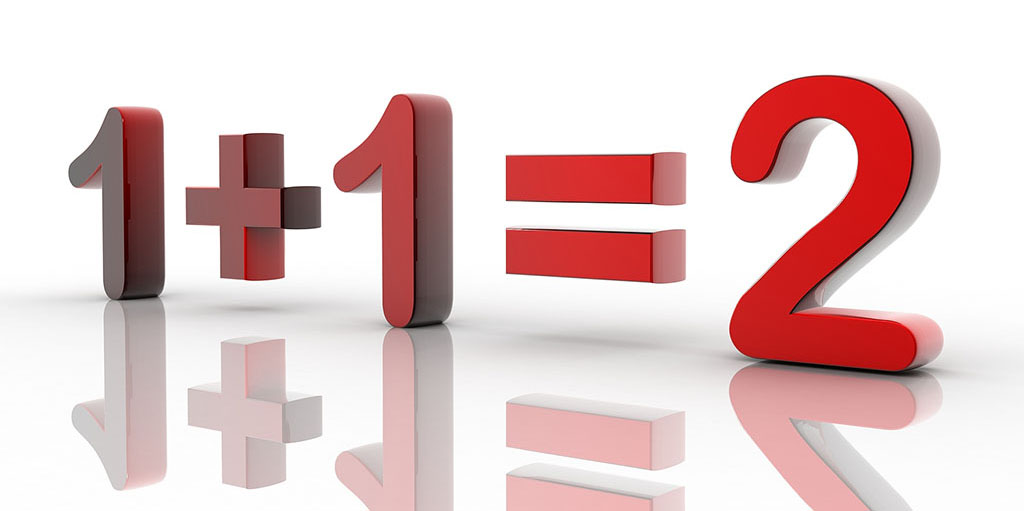What can behavioural science tell us about how to write B2B marketing copy?

When devising and writing B2B marketing collateral for scientific audiences, it’s tempting to think that you don’t need to account for the behavioural factors that many B2C marketers obsess over. But scientists are people too, and in this post I describe the main ideas in behavioural science that I think are worth paying attention to.
Scientists are people too!
Scientists are all logical people, right? When deciding what equipment to purchase or which service to use we read and understand all the relevant evidence, we ignore any emotional or people-based factors, and we come to a rational decision. Don’t we?
Well, no. Scientists are people too, and although we’re great at thinking deeply about problems and taking a rational approach to solving them, when it comes to making purchases and forging connections, we’re susceptible to the same behavioural factors as everyone else.
Despite this, treating scientists as unemotional analytical machines and writing marketing materials for them accordingly seems to be widespread in the science-focused segment of B2B marketing… and I’ve become increasingly convinced that it doesn’t work very well. As scientists, we can’t always get our heads around all the product literature we’re given, we often are influenced by emotional factors, and we don’t always come to the most rational decisions.
So I listened with interest to a day-long training session titled ‘Applying behavioural science to copywriting’ given by author and consultant Richard Shotton at CopyCon 2021. Here’s the bits that I learnt that I think are most relevant to B2B science writing.

The limits to behavioural science for testing copy
But before I start… what does behavioural science involve? In the context of writing copy for use in marketing campaigns, it uses experiments to test ideas about the factors that influence what we remember about a company or their products, or the opinions we have.
However, it’s important to understand that there are some limits to these experiments, and therefore the conclusions you can draw from them. Here’s my observations on what these are:
- They rarely consider B2B products. This doesn’t on its own make such studies irrelevant, but the point is that B2C purchasing decisions are often made by a single person. In contrast, B2B decisions are usually made jointly, or are subject to approval by other departments (purchasing or finance). So the decision-making process is considerably more complicated.
- They don’t generally consider decisions made later in time. Testing short-term responses is relatively easy in an experimental setup, but this means that the experiments are often biased towards those involving heuristics – the short-cuts in the brain that save overloading our faculties for critical thinking. Purchasing decisions made in science-focused organisations are rarely made in this way, so some of the effects seen in these studies may not work in real-life.
- The content itself is not often lengthy or challenging. To examine the influence of changes to the copy, the experiments need to eliminate confounding factors like complexity of the subject matter and the ability of the participants to absorb large amounts of text. So most of the experiments relate to adverts or short webpages on easy-to-understand subjects, which limits their relevance to many scenarios in B2B scientific marketing.
- The literature on new marketing channels or contemporary audiences is rather sparse. Some of the most often-cited studies are pretty old, which doesn’t mean they’re invalid, but it might make them less relevant. For example, consider a typical study from the 1960s that tested college-age Americans on their comprehension of a 200-word billboard advert… how relevant is that to writing a 200-character social media post for a culturally-diverse global audience?
So with those caveats dealt with, you might think there would be no worthwhile conclusions left on how to optimise copy to take account of reader behaviour. But I think there are, and here are my thoughts on the most useful.
#1: Social proof does work for B2B marketing
Many B2B companies in the sciences are coming to realise that ‘social proof’ from satisfied customers can play a powerful role in building trust and inspiring action. This makes sense, because at the end of the day, people in a company are still buying from other people – and corporate processes cannot completely eliminate such personal interactions.
The main messages from behavioural studies may therefore not be particularly surprising, but they are worth stating:
- Popular behaviours are more likely to be followed by others – we’re a social species, after all, and we’ve learnt over millennia that what benefits one person is likely to benefit another too.
- The more tailored the social proof is to the audience, the better the results – so if you want to sell your product in Canada, then use an advocate from that region, or if you’re looking to break into the new energy sector, then make a link to a case-study focused on advanced materials.
Having decided that you need some social proof for your business, the challenge is to find the right format and the right message – and I’m a big advocate for carefully-written case-studies or thoughtfully chosen testimonials to achieve this.

#2: Simple, concrete phrases are better remembered
A study from the 1970s[1] showed that people are nearly four times as likely to remember ‘concrete’ phrases, i.e. ones that can be visualised (e.g. rusty engine, white horse) than abstract ones (e.g. apparent fact, rational method).
On a related topic, a 2007 study[2] showed that readers judged the writers of complex texts to be less intelligent that those of simpler texts. This stands in contrast to what seems to be the widespread practice in science, where complex writing is often viewed as desirable. (They also found that texts in easier-to-read fonts gave better results than those in hard-to-read fonts.)
For science-focused copy, this means that you should cut down on vague statements in the passive voice, and avoid needless use of complex phrases or abbreviations:
You can read a short overview of this idea (and the following point about precision) in a recent article co-authored by Richard Shotton.[3]
#3: Being precise about a claim can boost believability
When we’re certain of something, we naturally default to giving an exact figure; whereas if we’re unsure, we’re more likely to give a vague answer. Think about being asked how old a colleague is – if you’re sure, you’ll give an exact age (e.g. “43 years”), whereas if you’re unsure, you might say “about 40”.
So it follows that claims associated with exact figures should be more likely to be thought of as being based on empirical evidence, and so more likely to be believed – an idea that is backed up by research.[4] But there are two difficulties in applying this in scientific marketing:
- The number may vary depending on the application, making it difficult to find a single figure that covers every eventuality without being misleading.
- You need to be very careful with the numbers you use, because scientists will of course be checking up on the evidence for them.
The answer is to be precise when you can, and only use vaguer claims when being specific is cumbersome. For example:

#4: We don’t always need to explain every detail
It’s been shown that getting the reader to make a little bit of effort in processing a message aids memorability – a phenomenon known as the ‘generation effect’.[5] However, there are limits to how much you should expect of the reader before the effect backfires – and it can be as simple as using a rhetorical question (one in which the answer is implied).[6]
This sort of approach works best for adverts, where short, simple messages and wordplay can make an ad memorable. For science copywriting in general, though, the lesson I take from this is that we don’t always need to explain every aspect of a new idea in minute detail, or laboriously describe the ultimate benefit of every product feature. Scientific audiences are easily capable of joining some of the dots for themselves, and if doing so helps them to remember the content, then so much the better.
#5: Describing what the customer might gain can help inspire action
The ‘endowment effect’ is based on the principle of loss aversion – that we’re more motivated to act when that action will stop us from losing something we already have, compared to when it will give us something extra.[7] So in a very simple example, people are more likely to act to prevent losing £100 than from acting to gain £100.
You might think that this is difficult to apply in sales, because the customer doesn’t own the product yet. But in terms of top-of-funnel marketing copy, what you can do is to let them imagine having the new equipment, so putting a picture in their mind of what they’d be able to achieve with it. It then becomes more difficult for them to deny themselves those benefits. (Of course, later in the B2B sales funnel, this is where product demos have a useful role to play).
So we might say:
To take advantage of the ‘endowment’ effect, let the customer imagine having the new equipment before inviting them to purchase it.
#6: Point out the effort you put into your products
Are you proud of your organisation’s products? If so, then you might be interested in a study from 2005,[8] which found that when companies make a point of explaining the work that’s gone into a product or service, they will gain a higher rating from the customer. But – and this is a big but – it only works so long as the customer doesn’t think that the effort is driven by the desire to persuade.
This is clearly a delicate line to tread, but given the resources that get poured into developing new products and services in the B2B science sector, I think there’s scope to highlight some of that work in a way that helps the reader to see how that reflects product quality and staff dedication, without being self-congratulatory.
So for example, your attention to detail, high standards of research, and willingness to overcome problems could all be highlighted in company-focused pieces. You just need to remember to point out how this ultimately makes things better for the customer, without going so far as to sell the product to them.

#7: Making things easy to do is highly effective
Finally, we all like life to be easy, so why do so many B2B organisations lay down barriers for prospective customers? From long lists of fields in web sign-up forms to calls-to-action buried deep in whitepapers, sometimes businesses seem determined to make it difficult for readers to carry out the desired action.
A 2017 study looked into this phenomenon for take-up by parents of an alerting service for their high-school children.[9] Although focused on the drastic improvement in take-up when using opt-in by default, it also found that asking parents to send a quick text message to sign up, rather than find and fill out a web-based form, increased take-up eight-fold (admittedly from a very low base!).
Although the context is quite different, I think this is something we ought to pay attention to as B2B science writers. When we want people to do something, let’s make it as easy as possible, by using clear calls to action placed prominently, and by cutting down on the amount of mouse-clicking and typing we expect from the reader.
When you want your readers to take action, cut down on the amount of mouse-clicking and typing you ask them to do.
Conclusions
Behavioural science is a fascinating field, and I think that the lessons it provides have the potential to enhance the effectiveness of messaging in B2B marketing, just as they do in B2C.
Of course, not all of the above ideas will work in every scenario, and they need to be balanced by clarity of messaging, reader expectations, and much else besides… but I hope they provide some ideas about how to make your words generate the results you want them to.
References
[1] I. Begg, Recall of meaningful phrases, Journal of Verbal Learning and Verbal Behavior, 1972, 11: 431–439.
[2] D. Oppenheimer, Consequences of erudite vernacular utilized irrespective of necessity: Problems with using long words needlessly, Applied Cognitive Psychology, 2007, 20: 139–156.
[3] R. Shotton and W. Hanmer-Lloyd, Making your copy more concrete will boost ad recall, Marketing Week, 2021.
[4] R.M. Schindler and R.F. Yalch, It seems factual, but is it? Effects of using sharp versus round numbers in advertising claims, NA – Advances in Consumer Research, 2006, 33: 586–590.
[5] R. Shotton, How the generation effect makes you recall ads, The Behaviours Agency, 2019.
[6] R. Ahluwalia and R.E. Burnkrant, Answering questions about questions: A persuasion knowledge perspective for understanding the effects of rhetorical questions, Journal of Consumer Research, 2004, 31: 26–42.
[7] R. Buric, 3 Clever ways to leverage the endowment effect online, insideBE, 2022.
[8] A.C. Morales, Giving firms an “E” for effort: Consumer responses to high-effort firms, Journal of Consumer Research, 2005, 31: 806–812.
[9] P.L.S. Bergman and T. Rogers, The impact of defaults on technology adoption, and its underappreciation by policymakers (Working Paper No. 6721), Center for Economic Studies and ifo Institute, 2017.
